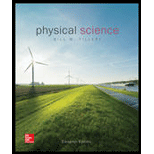
The step-down transformer in a local neighborhood reduces the voltage from a 7,200 V line to 120 V. (a) If there are 125 loops on the secondary, how many are on the primary coil? (b) What current does the transformer draw from the line if the current in the secondary is 36 A? (c) What are the power input and output?
(a)
The number of loops at the primary side of a step-down transformer.
Answer to Problem 15PEB
Solution:
The number of loops at the primary side is
Explanation of Solution
Given data:
A step-down transformer with 125 loops on the secondary side. The voltage at the primary side is
Formula used:
The expression that relates the number of loops and the voltage is written as,
Here,
Also, power and current can be determined by the formula, therefore
Here,
Explanation:
Consider the expression,
Rearrange to get the secondary voltage
Substitute
Conclusion:
Hence, the number of loops ate the primary side is
(b)
The primary current in a step down transformer.
Answer to Problem 15PEB
Solution:
The primary current is
Explanation of Solution
Given data:
A step-down transformer with 125 loops on the secondary side. The voltage at the primary side is
Formula used:
The expression for power in a transformer is written as,
Here,
Explanation:
Consider the expression for power in the transformer.
Rearrange the power expression to get the primary current
Substitute
Conclusion:
Hence, the primary current is
(c)
The power of the transformer at the input and the output sides.
Answer to Problem 15PEB
Solution: The power at the input and the output side is same and is equal to
Explanation of Solution
Given data:
A step-down transformer with 125 loops on the secondary side. The voltage at the primary side is
Formula used:
The expression for power at the input side is written as,
Here,
The expression for power at the output side is written as,
Here,
Explanation:
Consider the expression for the input power.
Substitute
Similarly, consider the expression for the output power.
Substitute
Conclusion:
Hence, the power at the input and the output side is same and is equal to
Want to see more full solutions like this?
Chapter 6 Solutions
Physical Science
- A transformer with more windings on the primary coil than on the secondary coil does which of the following? (8.5) (a) Steps up the voltage. (b) Steps up the current. (c) Steps up both current and voltage. (d) Will operate off dc current.arrow_forwardWhat is the rate at which the current though a 0.30-H coil is changing if an emf of 0.12 V is induced across the coil?arrow_forwardA 165F capacitor is used in conjunction with a dc motor. How much energy is stored in it when 119 V is applied?arrow_forward
- A plug-in transformer supplies 10 V to a video game system. (a) How many turns are in its secondary coil, if its input voltage is 116 V and the primary coil has 480 turns? (b) What is its input current when its output is 1.4 A?arrow_forwardA transformer has 300,000 windings in its primary coil and uses 12,000V AC input. How many windings would be needed to produce at output of 110V AC? Is this a step down or step up transformer? B)E xplain why a transformer only works with AC and not DC currents.arrow_forwardA transformer has 400 turns on its secondary and 100 turns on its primary. the primary is connected to a 10-V source. what is the voltage output of the secondary? if 3 A flows in the primary coil, how much current is there in the secondary coil?arrow_forward
- A transformer consists of a 500-turn primary coil and a 2000-turn secondary coil. If the current in the secondary is 3.0 A, what is the current in the primary?arrow_forwardA transformer is created with a 200 V input and 1200 coils in the primary. If the output voltage is set to be 80 V, how many coils are needed in the secondary?arrow_forwardA transformer has 300 turns on its secondary and 100 turns on its primary. The primary is connected to a 12-V source. (a) What is the voltage output of the secondary?(b) If 2.0 A flows in the primary coil, then how much current is there in the secondary coil?arrow_forward
- You have a transformer with 709 coils in the primary and an input voltage of 140 V. If you want an output voltage of 600 V, how many coils do you need in the secondary?arrow_forwardA transformer with 100 turns in its secondary coil supplies 8.0 V to the light in a toy. The primary coil is connected across 120 V. (a) How many turns does the primary coil have? (b) if the primary coil is connected to a 240-V source, what voltage appears across the secondary coil.arrow_forwardA transformer is used to supply a 14 V model train with power from a 138 V wall plug. The train operates at 68 W of power. (a) What is the current in the secondary coil of the transformer in ampere? (b) What is the current in the primary coil in ampere? (c) What is the ratio of the number of primary to secondary turns? (d) What type of transformer is this transformerarrow_forward
 Glencoe Physics: Principles and Problems, Student...PhysicsISBN:9780078807213Author:Paul W. ZitzewitzPublisher:Glencoe/McGraw-Hill
Glencoe Physics: Principles and Problems, Student...PhysicsISBN:9780078807213Author:Paul W. ZitzewitzPublisher:Glencoe/McGraw-Hill An Introduction to Physical SciencePhysicsISBN:9781305079137Author:James Shipman, Jerry D. Wilson, Charles A. Higgins, Omar TorresPublisher:Cengage Learning
An Introduction to Physical SciencePhysicsISBN:9781305079137Author:James Shipman, Jerry D. Wilson, Charles A. Higgins, Omar TorresPublisher:Cengage Learning


